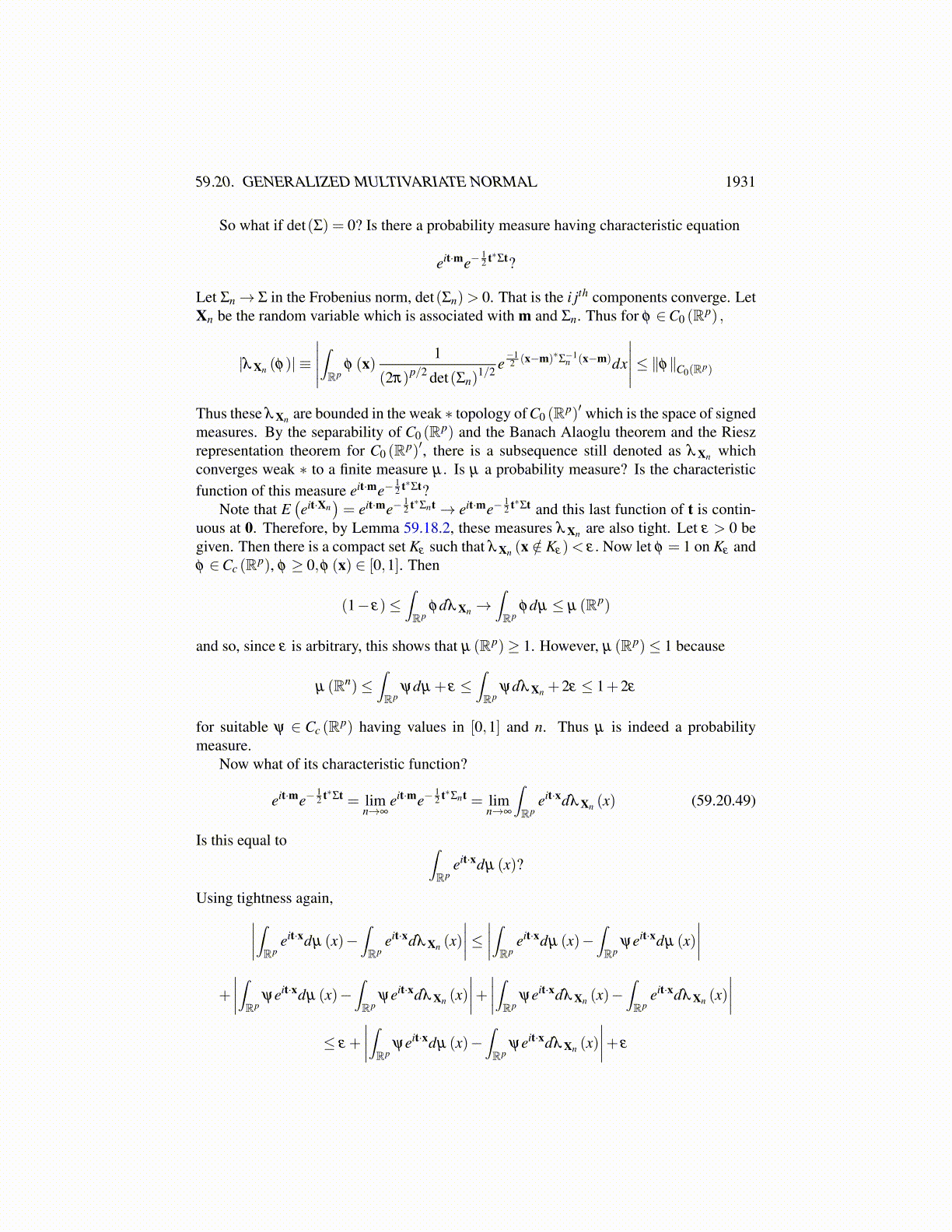
59.19. CHARACTERISTIC FUNCTIONS, PROKHOROV THEOREM 1931
the last equation holding by the monotone convergence theorem.It remains to verify
limk→∞
∫φdµk =
∫φdλ
for every φ bounded and continuous. This is where tightness is used again. Suppose||φ ||
∞< M. Then as noted above,
λ n (Kn) = λ (Kn)
because for p > n,λ p (Kn) = λ n (Kn) and so letting p→ ∞, the above is obtained. Also,from 59.19.47,
λ(KC
n)
= limp→∞
λ p(KC
n ∩Kp)
≤ lim supp→∞
(λ p (Kp)−λ p (Kn))
≤ lim supp→∞
(λ p (Kp)−λ n (Kn))
≤ lim supp→∞
(1−(
1− 1n
))=
1n
Consequently,∣∣∣∣∫ φdµk−∫
φdλ
∣∣∣∣≤ ∣∣∣∣∫KCn
φdµk +∫
Kn
φdµk−(∫
Kn
φdλ +∫
KCn
φdλ
)∣∣∣∣≤∣∣∣∣∫Kn
φdµk−∫
Kn
φdλ n
∣∣∣∣+ ∣∣∣∣∫KCn
φdµk−∫
KCn
φdλ
∣∣∣∣≤
∣∣∣∣∫Kn
φdµk−∫
Kn
φdλ n
∣∣∣∣+ ∣∣∣∣∫KCn
φdµk
∣∣∣∣+ ∣∣∣∣∫KCn
φdλ
∣∣∣∣≤
∣∣∣∣∫Kn
φdµk−∫
Kn
φdλ n
∣∣∣∣+ Mn+
Mn
First let n be so large that 2M/n < ε/2 and then pick k large enough that the above expres-sion is less than ε.
Definition 59.19.6 Let µ,{µn} be probability measures defined on the Borel sets of Rp
and let the sequence of probability measures, {µn} satisfy
limn→∞
∫φdµn =
∫φdµ.
for every φ a bounded continuous function. Then µn is said to converge weakly to µ .
With the above, it is possible to prove the following amazing theorem of Levy.